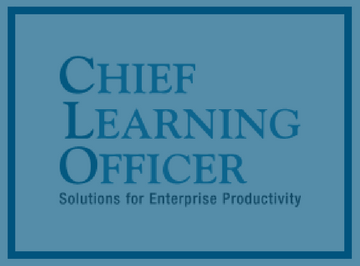Data On What Learners Want is Out There, and Schools Have It
Data On What Learners Want is Out There, and Schools Have It
For corporate training departments, any course that’s not a “page-turner” means wasted effort. If CLOs could tap into research showing how people are learning most effectively online, it could greatly improve learning content. By talking to universities about their approach to and results from online learning, CLOs could change the way their training and development teams design courses and think about learning.
Where to getting started
A plethora of schools publish MOOCs, or massive open online courses. Organizations like EdX launched by Harvard University and MIT have added dozens of leading schools to present free courses, online. Coursera and Udacity are others. Each of these organizations, and the schools that supply courses, extract heaps of data about what people are clicking on to learn, which, in turn, demonstrates retention rates. For instance, the dean of the Harvard University Extension School includes as part of his work gathering intelligence on how people learn.
If CLOs want to understand this data, they can start by contacting the person running the MOOCs for, say, HarvardX or the Harvard Business School. At Brown University, the responsibility for MOOCs is run out of the school’s College of Professional Studies. And Berkelee College of Music supplies MOOCS via something akin to a start-up, which is run from within the school itself.
“Not all universities are created equal in terms of research or their approach to effective online learning,” remarks Kevin Wilde, the recently retired CLO of General Mills and current Executive Leadership Fellow at the University of Minnesota. “I would start by asking other CLOs which universities are getting their attention.”
Another source for this research is your local university’s school of education. For example, Boston University’s School of Education and the Lesley Graduate School of Education are both gathering data on how best to push classroom learning online. Opening a window to this research could be as simple as calling a university and setting up a lunch to understand what they’re trying to address. Start the conversation by learning about their research agenda and how they’re measuring the ways education can work better. If your aim is more pragmatic, sit down with one of the deans for continuing education or a university extension school. These professionals often track how people are learning in a business-to-consumer environment.
Asking for the data
The goals for adult learning are threefold. First, generate and deliver content in a way that increases its relevancy for a person at a given time and place in their career. Second, as a CLO, you’re trying to increase the efficiency of delivery with respect to quantity (i.e., just enough learning) and modality (i.e., ILT, self-paced, etc.). And third, you want to deliver learning just in time. This thinking isn’t new; but the data we can now extract to vet our methods is. For example, you can ask a school questions such as, “With your MOOCs, what is the optimum amount of time someone can focus before they abort and go on to the next topic in a course? Is it, for example, seven minutes or 5.5 minutes?”
You might query them as to, “What are the user experiences, or screens, that help learners exceed the average times? Are you, from an instructional design point of view, embedding a game or video that keeps the learner engaged for up to, say, 10 minutes?”
In the past, experts like Jean Piaget, the Swiss developmental psychologist, guided our thinking on the theory and practice of education (e.g., spontaneous learning versus ready-made knowledge). But, now, we can add a massively large data set capturing people’s actual learning behavior. With this information, you have some guardrails and benchmarks for your organization’s future instructional design.
What’s in it for schools?
Why would a dean in charge of building these MOOCs want to meet with a CLO to discuss and share this information? Here’s why. Educators often see learning as a vocation. They are also keenly aware that corporate learning and its associated technologies have done a lot more for the delivery of learning than higher education has been able to achieve on its own. And educators, especially those in charge of continuing education and MOOCs, know that the CLOs represents a potentially large pool of future students. Passion for the subject, a desire to improve their methods and attracting new students motivate educators.
“Most of the best universities are constantly looking to be more relevant to the business world as a way of helping their students succeed,” adds Wilde. “A CLO-university connection can benefit both parties.”

This column was originally published in CLO.